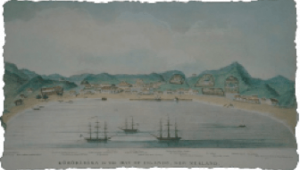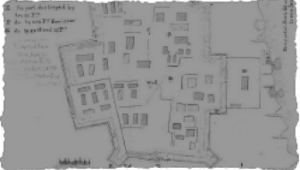
Management
History



Ruapekapeka has suffered a history of neglect interspersed with occasional tidy-ups. Against the odds, the earthworks have survived in remarkably good condition. The British had set the pā on fire after the battle, but the trenches, pits and tunnels were left intact. Some of the palisades were still standing in 1899, and cannon balls were lying about the place.
Around the turn of the century, cattle belonging to local settlers were becoming a problem. The cows trampled the earthen embankments, and the ditches and tunnel entrances proved hazardous. The farmers responded by filling in some of the earthworks. Fires and ploughing caused further damage and it was apparent that the pā was heading towards obliteration.
In 1914 the pā was taken under the Public Works Act for a Scenic Reserve. A sum of £20 pounds was proposed to compensate the Māori owners. Conditions were stipulated: the pā was to be fenced, cleared of scrub and kept in good order.
Ruapekapeka Pā became a popular visitor site in the 1920s after it was cleared of vegetation and sewn in pasture. The well-maintained state did not last. In the absence of grazing, weeds and ferns grew to obscure the earthworks. The vegetation was cleared again in the late 1930s, but again it was not maintained. The pā remained in a neglected state for the next 30 years.
The late 1960 saw a burst of activity when a proposal was put forward to develop the site for visitors. Over the subsequent decade, extra land was added to the reserve including the sites of the British Forward Position and Main Camp. The British lines were united with Ruapekapeka Pā in 1979 when the bush-covered valley in between was added to the reserve. The visitor development project stalled.



